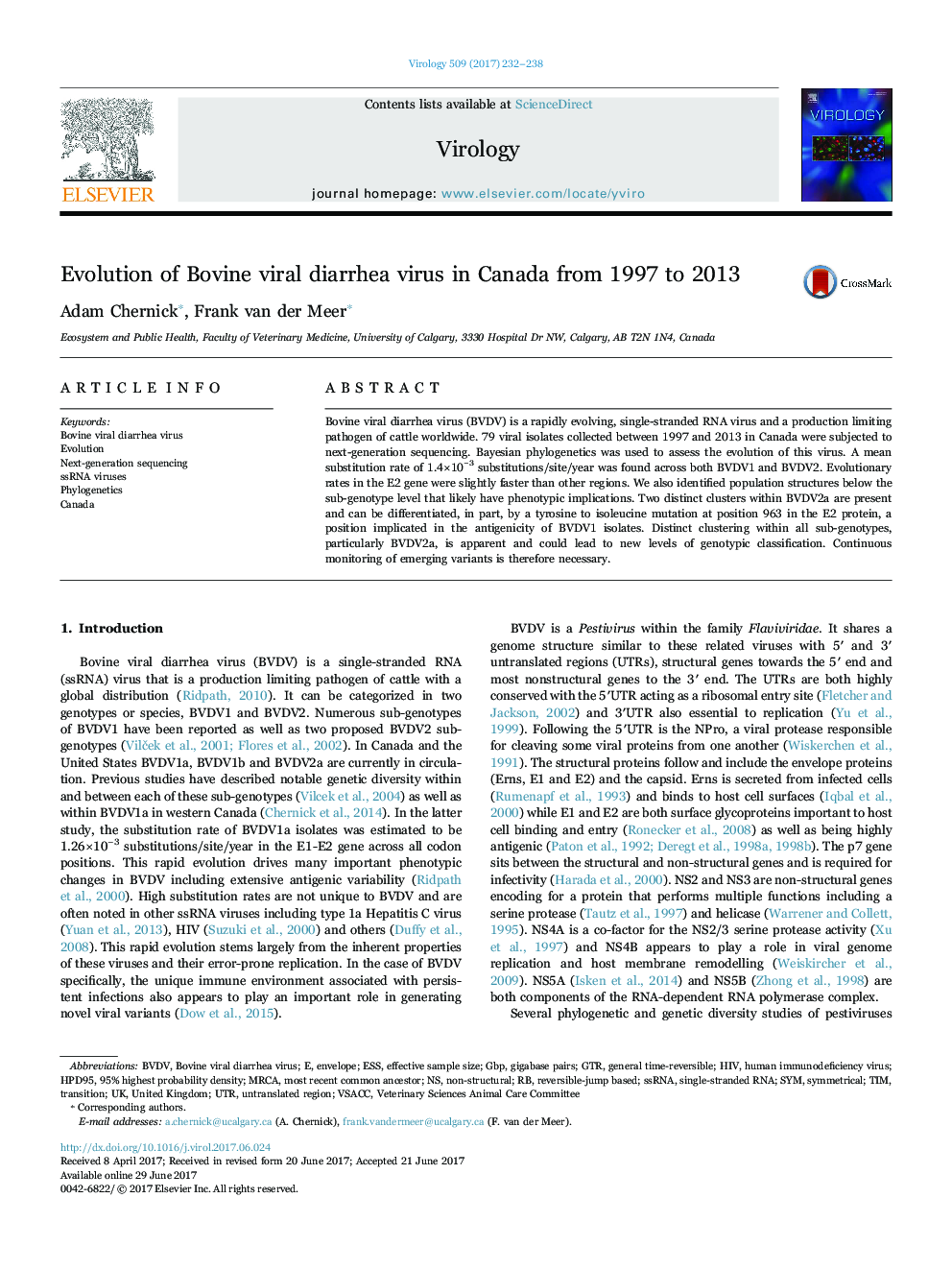| Article ID | Journal | Published Year | Pages | File Type |
|---|---|---|---|---|
| 5674936 | Virology | 2017 | 7 Pages |
â¢BVDV is a highly variable ssRNA virus infecting cattle.â¢Isolates from across Canada were used in a Bayesian phylogenetic analysis.â¢A mean substitution rate of 1.4Ã10â3 sub/site/year was calculated.â¢New levels of genotypic classification may be justified.
Bovine viral diarrhea virus (BVDV) is a rapidly evolving, single-stranded RNA virus and a production limiting pathogen of cattle worldwide. 79 viral isolates collected between 1997 and 2013 in Canada were subjected to next-generation sequencing. Bayesian phylogenetics was used to assess the evolution of this virus. A mean substitution rate of 1.4Ã10â3 substitutions/site/year was found across both BVDV1 and BVDV2. Evolutionary rates in the E2 gene were slightly faster than other regions. We also identified population structures below the sub-genotype level that likely have phenotypic implications. Two distinct clusters within BVDV2a are present and can be differentiated, in part, by a tyrosine to isoleucine mutation at position 963 in the E2 protein, a position implicated in the antigenicity of BVDV1 isolates. Distinct clustering within all sub-genotypes, particularly BVDV2a, is apparent and could lead to new levels of genotypic classification. Continuous monitoring of emerging variants is therefore necessary.
